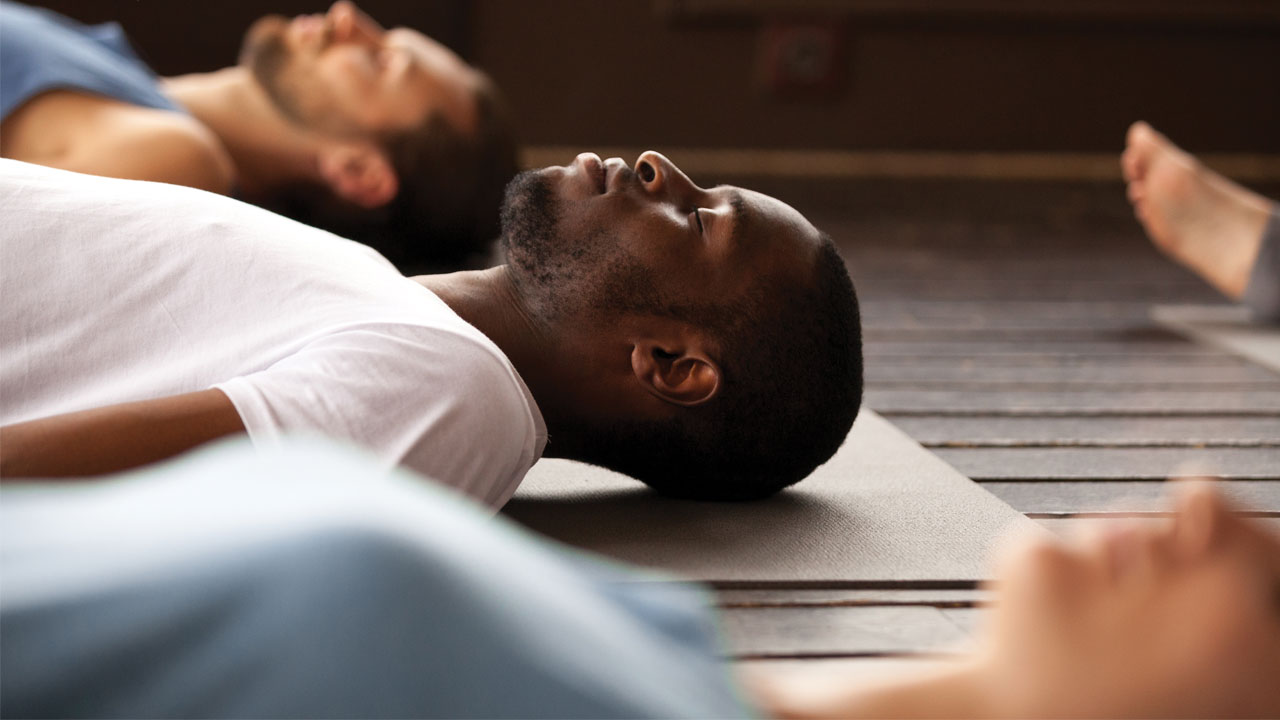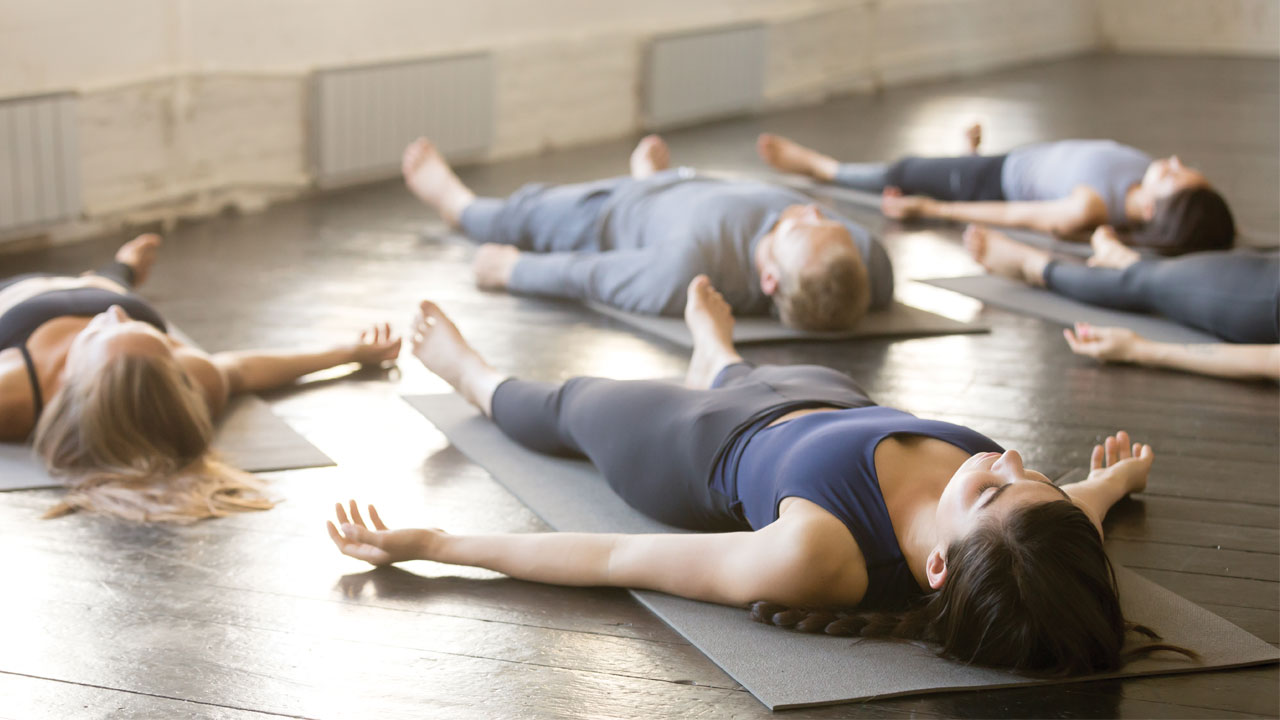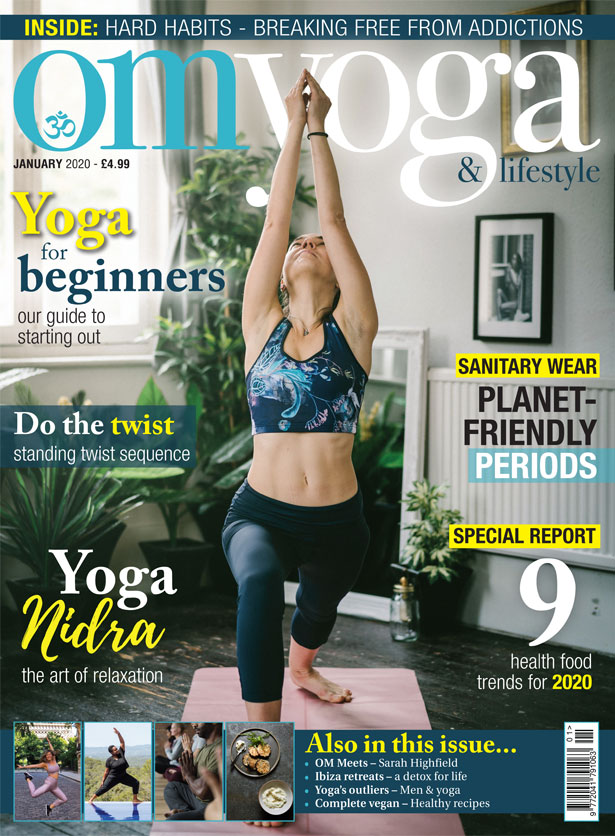
Yoga Nidra - The art of relaxation
If you discover one thing this year, then let it be the wonderfully relaxing practice that is Yoga Nidra, By Dr Kiki Morriss
Being relaxed is a natural state that our body and mind should be in the majority of the time. However, the pace and complexity of our lives often makes us forget this and we spend much of our time, both awake and asleep, in a state of mental and physical tension.
As a yoga teacher, I consider the most important part of my job is to help my students to relax deeply, which in turn allows them to live at their healthiest and happiest, to sleep well and to experience peace of mind, vitality and boundless energy. Throughout the yoga classes, I encourage them to focus their minds on their breath, their bodies and the spaces between their thoughts.
However, it is the final relaxation at the end of the class, when we lie quietly in Savasana (Corpse pose) with our eyes closed, that presents our greatest opportunity for complete mental, emotional, physical and spiritual relaxation.
Our bodies and minds are a miraculous web of interconnectedness and, when given the right environment, are hardwired to return to wellness and wellbeing. During my years teaching yoga, I have experimented with different ways to create this right environment and to assist my students to relax completely during their final relaxation.
I’ve tried playing music, giving a gentle shoulder and neck massage or spraying the room with lavender essential oil. I’ve tried complete silence, autosuggestion, asking them to relax, all with varying degrees of success.
The miracle of Yoga Nidra
Then one day I was introduced to the miraculous practice of Yoga Nidra and have used this simple yet profound technique at the end of every yoga class since, as the ultimate way to lead my students on a journey of complete rest and recovery.
I have also used the practice regularly myself as a way to stay in balance, despite the demands of my life as a yoga teacher, yoga therapist, medical doctor and mother.
The practice
Yoga Nidra is a systematic practice that is suitable for everyone, of any age or physical ability, and it brings about complete relaxation, whilst cultivating multiple levels of wellbeing. It can be practiced at any time of day to suit your lifestyle and can be learned from a teacher or from a recording.
If you are struggling with a seated meditation practice, because your mind is wandering and your body is aching, Yoga Nidra can serve as a good alternative as you get to lie down comfortably whilst your mind is gently guided.
Reference to Yoga Nidra is made in the Mahabharata, an epic Indian poem, where it is lyrically described as ‘the deep sleep under the spell of spiritual meditation.’ This ancient text is considered to have been composed in the 4th century BCE or earlier. In the 20th century Yoga Nidra was adapted and developed by Swami Satyananda, making it accessible to a modern audience.
The practice is usually done lying down but can be done sitting in a chair. It takes between 20-30 minutes. There are many different versions, all of which have similar components, including making a Sankalpa, rotation of consciousness and visualisations. Over the years I have developed my own version, which I use consistently and successfully for all my students, whatever their age or mental and physical condition.
Sankalpa (intention)
At the beginning and the end of a Yoga Nidra practice, you are asked to repeat a Sankalpa or intention. The Sankalpa is a short, positive statement, which is repeated three times. Some examples of a Sankalpa are: “I am successful in all that I do”, “I achieve total health” or “I am a positive force for the evolution of others.”
It is important to choose your Sankalpa carefully, using precise, clear wording, according to what you want to achieve in your life. Take your time deciding on your Sankalpa and once you have chosen it, do not change it.
The Sankalpa is very powerful, as it is impressed on the subconscious mind when it is receptive and sensitive to autosuggestion during Yoga Nidra.
Rotation of consciousness
In rotation of consciousness you are guided through a journey of awareness of different parts of your body. You do not need to move your body or concentrate too intensely. Instead you stay still and alert as you move your mind from one part of your body to the next.
Do not worry if you miss some of the instructions, as this is very natural. Often the conscious mind withdraws itself and the subconscious mind comes to the fore. Trust that the words of the practice are being imprinted on your mind, even if it seems to be drifting.
You may also find that various thoughts, emotions and disturbances start to surface during the practice. Again, this is very natural, as repressed experiences and emotions will emerge when your mind and body begin to rest. What is important is that you welcome these experiences with awareness and detachment, trusting that they are temporary and will pass.
Visualisations
In this part of the practice you are asked to visualise images such as a wide, open, blue sky, a waterfall or a butterfly landing on a flower. This induces mental relaxation, guides the mind to concentrate and, over time, develops profound feelings of calmness and peace.
Guided image visualisation is a powerful way to resolve repressed conflicts, desires and memories, whilst awakening your creativity.
End of the practice
The practice of Yoga Nidra is concluded by gently and gradually bringing your mind back from deep relaxation to waking consciousness and by bringing your awareness back to your body and breath.
Rest-renew-heal response
Many important physiological changes occur during Yoga Nidra, as there is a decrease in the fight-flight-fright response of the sympathetic nervous system and an increase in the rest-renew-heal response of the parasympathetic nervous system. This helps you feel calm, in control of your experience, and connected with yourself and the world.
When the sympathetic response dominates, states of anxiety, apprehension, irritability, worry and anger are accompanied by a variety of physical symptoms including headache, giddiness, palpitations, sweating and abdominal pain. An antidote to this is the practice of Yoga Nidra, which is not only a way of coping with stress but offers a way to transform and positively use tension as a stepping stone to greater awareness, productivity and achievement in your life.

Uses of Yoga Nidra
There are widespread uses of Yoga Nidra and it promises to play a more significant role in the future, as doctors and health care professionals begin to fully recognise its potential.
It can be used as a powerful, preventative measure for healthy, active people who need help relieving accumulated tensions, whilst increasing stress resistance and overall efficiency.
It can also be used to treat a vast range of conditions including anxiety, depression, panic attacks, eating disorders, insomnia, addictions, chronic fatigue, hypertension, arthritis, asthma, headaches and migraines. It is extremely effective in the relief of pain, both acute and chronic, and has an important role in palliative and end-of-life care.
Yoga Nidra has been used successfully by the US military to treat veterans, returning from Vietnam, Iraq and Afghanistan, for PTSD (post-traumatic stress disorder.) They have reported improved mood and sleep, decreased rage and anxiety and increased self-awareness and peace of mind, despite ongoing challenges due to poor mental focus and intrusive, traumatic memories.
Your daily routine
The more you practice Yoga Nidra, the more you will benefit from it. If you practice a little, it will help you a little. However, if you make it a part of your daily routine, you will soon experience profound and positive changes in your life, as it enables you to live a meaningful and peaceful life in any environment.
If possible, practice it at the same time and in the same place every day, linking it with other positive, daily habits that are already in place in your life. To set up a consistent, long-term practice such as Yoga Nidra isn’t always easy but, with time and effort, almost any good habit can be shaped and maintained.
We often think we are relaxing when we sink into a chair with a cup of coffee, an alcoholic drink or cigarette, read a newspaper or watch the TV. In fact, these activities are only sensory distractions and do not create the real relaxation and rest of Yoga Nidra.
Conclusion
To practice the art of relaxation is to possess the key to good health, vitality and peace of mind, as it restores your whole being and liberates great resources of energy.
Yoga Nidra is a simple yet profound way to unwind your nervous system and experience the relaxation that is your natural state and your birthright.
Dr Kiki Morriss is a medical doctor, yoga teacher, yoga therapist and founder of Primrose Hill Yoga, where she teaches adults, children and families. Visit: primrosehillyoga.com or Instagram.com/kikimorriss

BECALMED: YOGA NIDRA RECORDINGS
With the pace of everyday life so hectic for most of us today, Kiki Morriss has teamed up with Finnish-born composer and musician Anné Kulonen with the aim of giving people a simple way to bring some calm and relaxation into their daily lives.
As a composer, Kulonen has always been fascinated by our whole sonic environment and the impact it can have on our physical and mental wellbeing - from the sounds we are exposed to that are beyond our control to the music we choose to listen to, as well as the acoustics of the space that we live and work in.
It has been a joy for the pair to collaborate on ‘Becalmed’ — a series of Yoga Nidra recordings now available online.
You can listen to the voice of Kiki Morriss alone or accompanied by a gentle soundscape. There are options for you to use Yoga Nidra as a prelude to sleep, encouraging calm, serene and restful nights, or as a practice during the daytime to soothe everyday stresses, increase your productivity, creativity and focus whilst providing rest and relaxation.
Bonus tracks are available, featuring guided visualisations. These can be used if you are short of time or if you want to share the practice with children. There is also an option to listen to the soundscape on its own.
Becalmed recordings can be downloaded via primrosehillyoga.com and iTunes.




